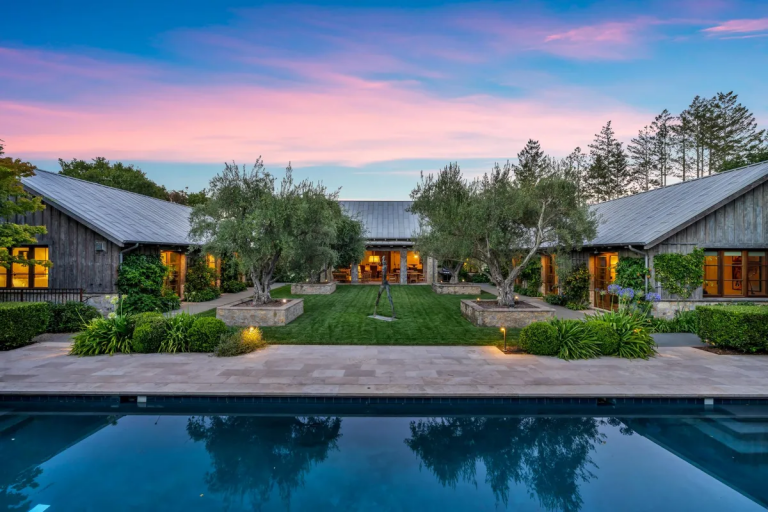Celebrate Earth Day With These 5 Landscaping Trends
When the first ever Earth Day launched on April 22, 1970, it shook the world. Public awareness of the environmental movement was already growing—but suddenly, people had a platform to make their voices heard and their solidarity known. With very little planning or coordination, 20 million people participated in events and demonstrations, making the first Earth Day the largest single-day protest in history. The following year, the number of U.S. citizens who considered the environment a top priority had grown by 2,500%.
We need to carry that momentum in order to protect our planet, and everyone can do their part.
Start on the piece of the earth that you inhabit, and enable plantlife and wildlife to proliferate with these five leading landscape trends.
1. Keep it Local, Keep it Real
The romantic appeal of the classic cottage garden, bursting with naturally occurring flowers, has come back into fashion. That’s good news for pollinators like hummingbirds and bumblebees, as well as any other species that may meander through your yard. It’s also good for you, because rewilding your lawn and letting regional flora bloom means a lot less maintenance, and makes for a fantastic cutting garden that brings a steady supply of fresh, local flowers to your home.
This Victorian estate in Ontario, Canada, has elevated the cottage garden into an artform. The bushes, shrubs, and trees that flourish across its 15 acres will be as picturesque in the idyllic summer as they are in the Christmas card-worthy winter.
2. Grow a Wall of Greenery
Being close to nature reduces stress; plants clean the air we breathe, and create cool spaces on hot days—even their color has a psychologically calming effect. As a result, there has been a surge of interest in floral walls, as well as a mini-industry of interior design firms simulating them inside homes and offices. But the best “living walls” are grown outside, where they can thrive in the sunshine, nurture local biodiversity, and boost your energy. And when outdoor space is limited, a simple trellis and some varieties of climbing plants extends your garden vertically.
The most iconic green walls might very well be the ivy-covered heritage estates of the East Coast, like this 18th century manor that straddles the bucolic border between Pennsylvania and New York. With 11 bedrooms spread across four buildings, each with their own charming character, this home redefines the rural retreat.
3. Extend Your Living Space
One of the biggest recent trends to consider when extending your garden is establishing a sense of continuity between interior and exterior spaces. You can certainly do this by installing an awning for your patio, or a gazebo in your garden, and adding furniture to the yard; but you can also simply bring plants closer to home. Cultivating climbing vines on a pergola, or planting culinary herbs and spices both inside and outside your kitchen, allow you to expand your garden space.
Indoor-outdoor living achieves its pinnacle in this late-19th century Italian villa near Como. Not only does the lush, dense vegetation practically spill into the home, but Lake Como feels like an extension of the patio itself.
4. Plant Smart For the Future
Exotic plant varieties like tropicals, succulents, and Mediterranean species are in vogue, and along with being aesthetically pleasing, they serve some very practical purposes. Not only can xeriscaping eliminate the need for water- and fertilizer-dependent turf, but it provides much more resistance to heat and drought—which in some regions are becoming a seasonal norm.
With xeriscape gardens being hotly sought-after for their resilience and water conservation, it’s no wonder that this fabulous California mansion by the world-renowned architect Wallace Cunningham incorporates them into its grounds. They’re a visually striking setting in which to recline in the sun and admire the mountains and valleys beyond.
5. Sow Your Own Sanctuary
As you care for the planet, you need to care for yourself, too. That’s why so many people are designing gardens that maximize wellness and mindfulness, and creating outdoor spaces that feel like holiday destinations. This has led to an increasing demand for swimming ponds and pools, fire pits and heaters, barbecues and open air kitchens, and light installations.
At first glance, the garden of this Dallas penthouse looks like it could be somewhere out in the country—and it’s only when you notice the surrounding skyscrapers that you realize you’re still in the heart of downtown. A getaway like this is what countless city-dwellers aspire to.
6. Fill the Balcony With Flora
Another major urban trend is using pots, planters, and window boxes to maximize potential gardening space. Porches, balconies, decks, and solariums can become lush bowers of leaves and flowers. With moveable and stackable containers, homeowners are able to optimize the vegetation they grow based on the lighting, temperature, and season in which it flourishes.
For an example of how to make the most of outdoor and semi-outdoor space when growing modular gardens, look at the upper level of this unique,16 bedroom hacienda in Guanajuato, Mexico. The turnkey property is a culture artifact, with historic antiques in situ and preserved by the United Nations.
We live on a magnificent planet, and we can protect and perpetuate its magnificence by being good stewards of the lands that we occupy. April 22 may be marked annually for Earth Day, but as long as this is the one home we all share, it’s crucial to celebrate and care for it through the gardens we grow and the plants and animals we live alongside.
This blog originally appeared on SIR.com, read it here >







